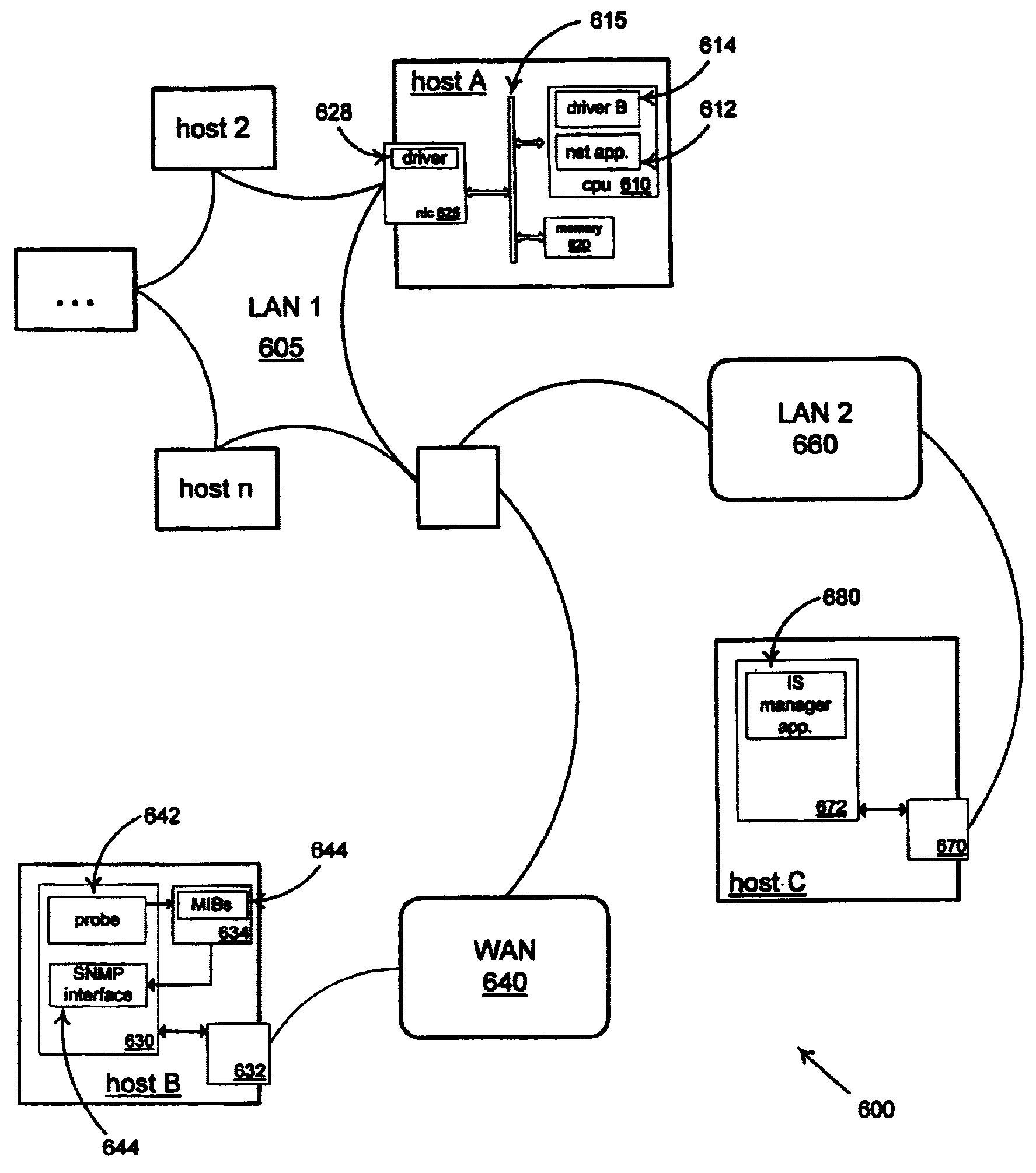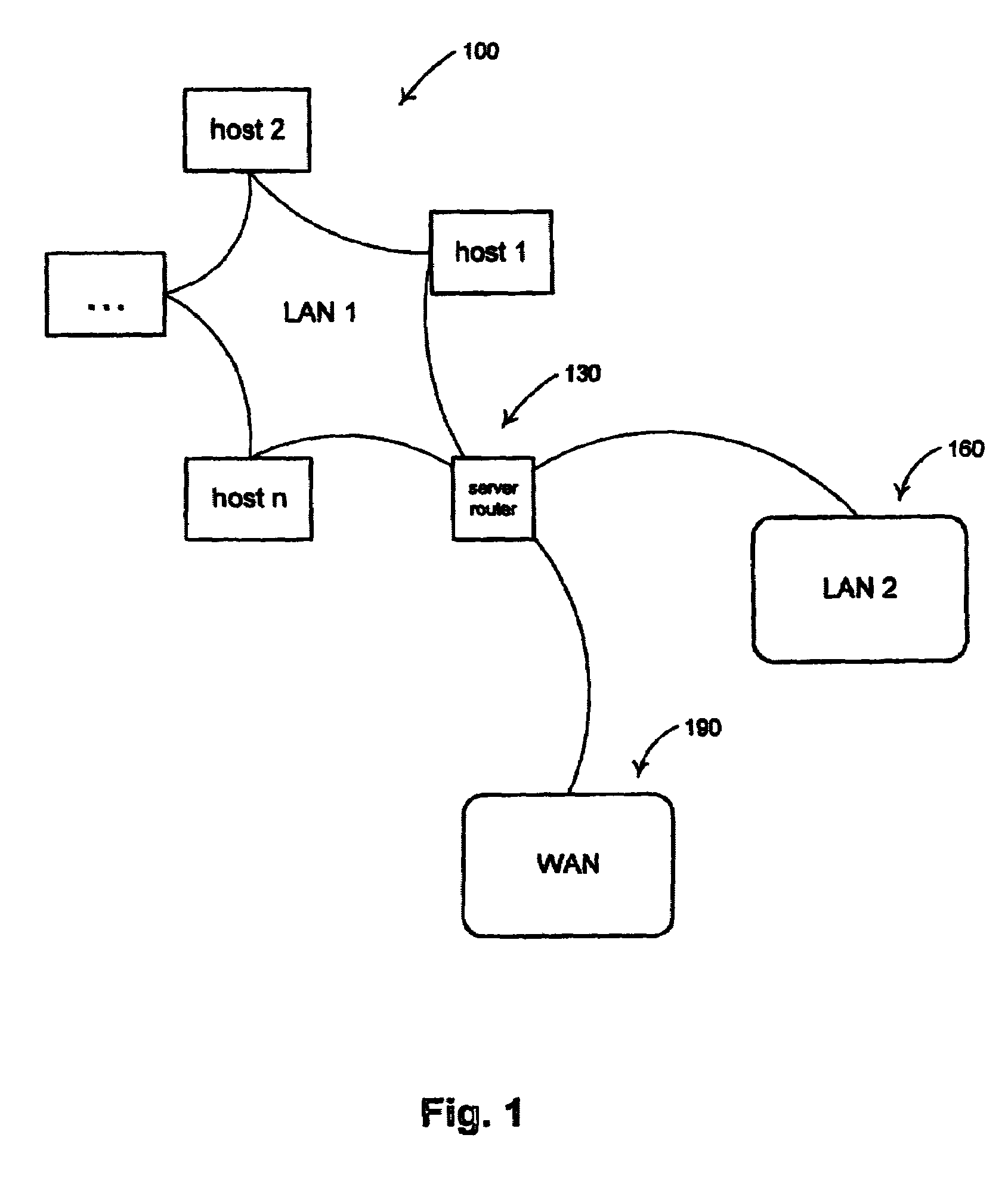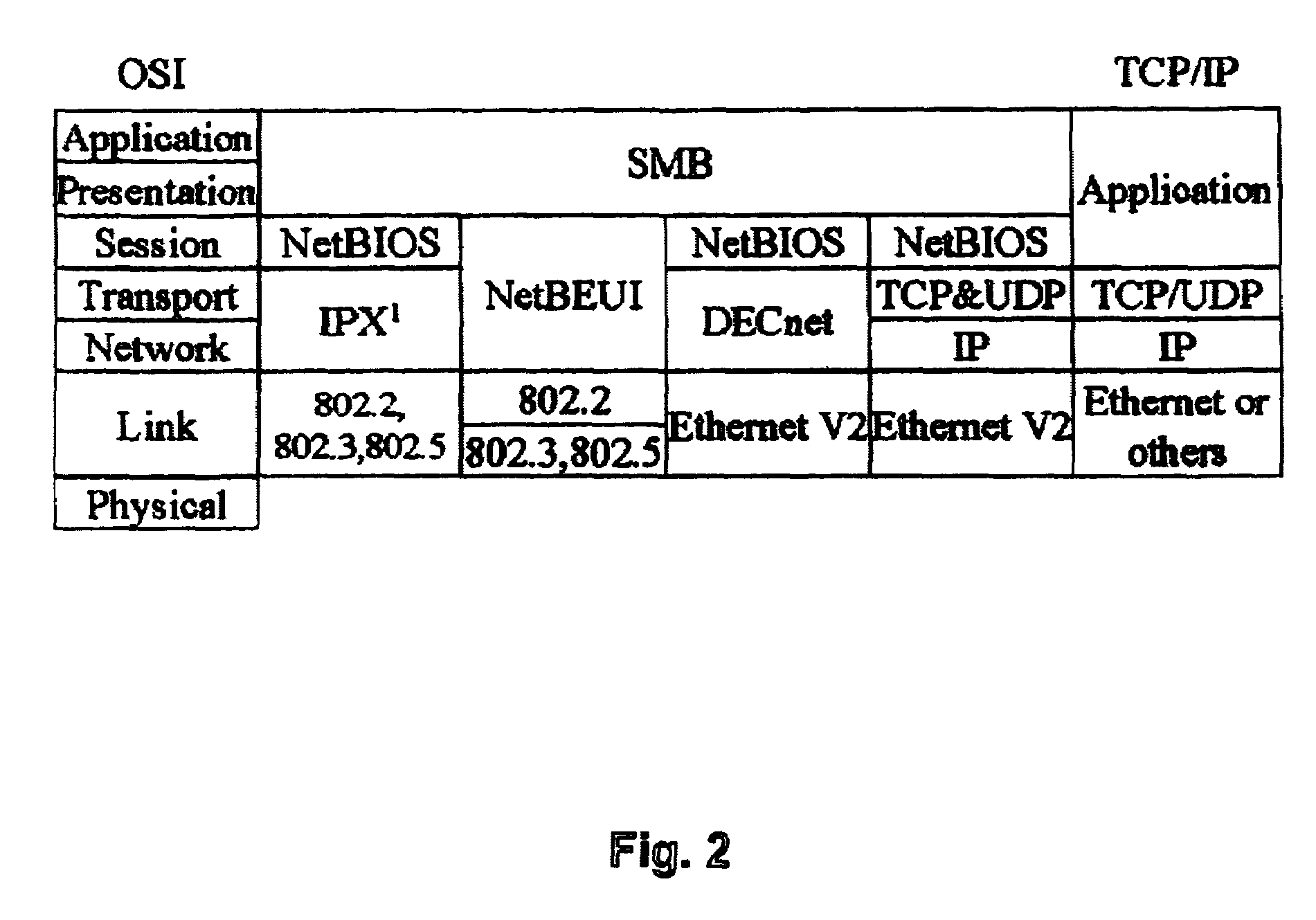Method for correlating and presenting network management data
a network management and data technology, applied in the field of network management, can solve the problems of increasing the difficulty of monitoring performance and pinpointing problems, the ineffective presentation of data presented to is managers, and the attention given to the initial capital cost of pcs, so as to achieve convenient implementation
- Summary
- Abstract
- Description
- Claims
- Application Information
AI Technical Summary
Benefits of technology
Problems solved by technology
Method used
Image
Examples
Embodiment Construction
[0073]The RMON standard provides the capability for extension MIBs (Management Information Base—a structured collection of managed objects. A standard for correlating data collected from network traffic). MIB data retrieved from the network traffic is stored in one of an RMON standard MIB or an extension MIB. An LAN agent or driver working in conjunction with a Network Interface Console (NIC) retrieves the data from the network traffic and builds the MIB.
[0074]Referring again to the drawings, wherein like reference numerals designate identical or corresponding parts, and more particularly to FIG. 3 thereof, there is illustrated a block diagram of selected components and communications of a host device 300. The host device 300 includes a Central Processing Unit (CPU) 310, a system bus 320, and a Network Interface Console (NIC or Network Card) 330. The NIC 330 receives packets (TCP / IP packets, for example) off bus 320, placing them on the network 335. The NIC 330 receives packets from...
PUM
 Login to View More
Login to View More Abstract
Description
Claims
Application Information
 Login to View More
Login to View More - R&D
- Intellectual Property
- Life Sciences
- Materials
- Tech Scout
- Unparalleled Data Quality
- Higher Quality Content
- 60% Fewer Hallucinations
Browse by: Latest US Patents, China's latest patents, Technical Efficacy Thesaurus, Application Domain, Technology Topic, Popular Technical Reports.
© 2025 PatSnap. All rights reserved.Legal|Privacy policy|Modern Slavery Act Transparency Statement|Sitemap|About US| Contact US: help@patsnap.com



